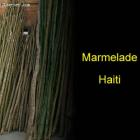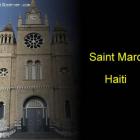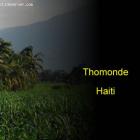ADVERTISEMENT
Mulato - Haiti Observer Blog
Mulato, Haiti Observer Blog. Read the following articles about Mulato
Hannibal Price, Haitian author and diplomat
Born in Jacmel in 1841 to a well-to-do mulatto couple, Hannibal Price began life above the curve. His well-funded education gave him the means to rise high in various respects and he became known as an author as well as a diplomat, having had the post of ambassador from Haiti to the United States for three years from 1890 until his death in 1893.
Price also acted as a Provisional Government Counselor after President Michel Domingue's fall in 1875 and was a serious advocate of Florvil Hyppolite. During the time he played the role of Minister Plenipotentiary to Washington he wrote the book he would be most known for entitled, 'De la Réhabilitation de la Race Noire par la République d'Haïti' (On the Rehabilitation of the Black Race by the Republic of Haiti). This further journey into authorship and the subject matter discussed was said to be in answer to 'Hayti or the Black Republic' by Spenser St. John. Published posthumously, the book sets about to comprehensively show all the possibilities for Haiti if the chains of illiteracy and the consuming practice of vodou were not in existence. It also endeavored to defend the Negro race and present the country to the foreign world in a more friendly light through the discourse of the history and social life of Haiti so voluminously documented within the pages.
Francois-Wolff Ligonde, who presided over Duvalier- Bennett wedding is Dead
An ardent supporter of the Duvalier regime, Haitian Bishop Francois-Wolff Ligonde passed away. According to Radio Kiskeya based on information obtained from Bishop Louis Kebreau, he died following an unspecified illness.
Bishop Francois-Wolff Ligonde was born in the city of Les Cayes, on January 17, 1928. On August 20, 1966, Pope Paul VI nominated him as Archbishop of Port-au-Prince. After more than 40 years in this position, Bishop Francois-Wolff Ligonde retired from his post in 2008.
Bishop Francois-Wolff Ligonde became famous when he presided over the wedding of Jean Claude Duvalier and Michele Bennett, whom he is the uncle. The wedding that many people believe marked the beginning of the end of the regime. There were several issues on the table with this particular wedding: One, Michele Bennett, a mulatto who came opposed to the Noirisme movement that Francois Duvalier has been promoting throughout his government. Two, the wedding itself in 1980 cost over $5 millioms.
Populist President Dumarsais Estime
Dumarsais Estime, Haiti's 33rd president, held office for four years. His presidency is notable because he was the first black leader elected after the U.S. occupation ended in 1934.
Although Estimé married a mulatto elite, his determined educated blacks were to make up the majority of his administration's political appointees. Reversing mulatto elite influence, he championed an education initiative, building schools in poverty-ridden villages and offering advanced teacher-training. This effort created a 45% rise in elementary school attendance.
Dumarsais Estime's agenda included road-construction projects, literacy programs, and improving community services. He also amended the Constitution to provide workers the right to form unions and raised the minimum wage.
The Wedding of Jean Claude Duvalier and Michele Bennett
It was revealed that the two met in High school. However, the romantic relationship between Michele Bennett and Jean Claude Duvalier did not begin until ten years later. the wedding that was considered the biggest event of the time took place on May 27, 1980. The wedding was estimated to cost over US$3 million. The marriage also brought an underlining issue to the surface in the Haitian society. Many saw it as renewed symbol of alliance with the mulatto elite by the Duvalier regime. This was in direct contrast to the policy of Francois Duvalier who in 1957 was fighting against presidential candidate Louis Dejoie, a mulatto land-owner and industrialist from the north of Haiti. Francois Duvalier used used a Noiriste strategy to challenge the mulatto elite and appealed to the Afro-Haitian majority.
Following the wedding and the increased power gained by Michele Bennett as the new First Lady, new friction started to flair-up between her and her mother in law, Simone Duvalier.
Francois Duvalier, Minister of Public Health under Dumarsais Estime
Francois Duvalier who was appointed under the government of Estime, joined the government of President Dumarsais Estime, becoming director general of the national public health service. In 1948 he is appointed as minister of public health and labor.
After the military coup that overthrown the Estime regime on 10 May. 1950, Duvalier returns to his medical career. However, quietly and behind the scenes he begins organizing against the military regime that was in place then. By 1954 he is the central opposition figure and goes underground, hiding inside of the country.
The election of Dumarsais Estime represented a break with the traditional Haitian politic at the time. For one, he was anti-elitist and therefore generally anti Mulatto. The constitution was changed and came into effect in November 1946. He increased the representation of middle-class and lower-class blacks in the public sector and suggested that voodoo be considered as a religion equivalent to Roman Catholicism
Dumarsais Estime, Paul Magloire and Francois Duvalier shaped Haiti
Here is a picture of three major players in the history of haiti: Dumarsais Estime, Paul Magloire and Francois Duvalier
Dumarsais Estime came into power in haiti following a seven-month period of political wrangling. His administration was marked by confrontation with the American government.
The Noiriste government of Dumarsais Estime was noticed by many in the international community. Most Government jobs during his administration, specifically cabinet positions, were reserved for black professionals instead of members of the Mulato elite.
Focus was also on education where he built many provincial schools and expanded training for teachers
Francois Duvalier Reign in Haiti
Francois Duvalier, 40th President of Haiti, began life in Port-au-Prince. Born to a well-to-do family, he earned a medical degree from the University of Haiti. After serving as a political appointee under President Estimé, he ran for the presidency under a populist platform that won support from the Afro-Haitian electorate. He won and began his rule of tyranny, manipulating the Constitution to declare himself "President for Life".
Francois Duvalier tolerated no opposition to his repressive policies. He intimidated his enemies, routinely ordering assassinations, an estimated 30,000 of them. Many educated Haitians fled Haiti, and the island has never recovered its intelligentsia.
Daniel Fignole a Brilliant Labor Leader
Daniel Fignole, born in 1913 in Pestel and raised in grinding poverty, suffered from childhood malnutrition. To escape the poverty of his birthplace, Daniel re-settled in Port-au-Prince and sought an education. He proved to be an excellent student, winning acceptance to a top-tier university in the capital.
During the early 1940s, Daniel Fignole published the leftist, Chantiers, in which he harshly criticized the mulatto elite of Haiti. President Elié Lescot, provoked by Fignolé's attacks, stopped the publication, axed him from his government job, and spied on him.
Indifferent to government actions, Daniel Fignole kept organizing the working-class of Port-au-Prince. They became aware of him as an electrifying orator, motivational writer, and powerful labor leader. It was rumored he could rally mass demonstrations at a moment's notice. In 1947, he headed the Peasant Worker Movement, a tight-knit union comprised of every labor sector.
Stenio Vincent Uneasy Alliance with the Dominican Republic
Stenio Vincent was the 30th President of Haiti, from 1930-1941. Born of mixed-race parentage, he earned his law-school degree by his 18th birthday. He rose to prominence in the leadership role in the Chamber of Deputies before running for the presidency. As part of his political platform, he voiced extreme disapproval of the U.S. occupation of Haiti. Vincent won the National Assembly majority vote and assumed office in October 1930.
By 1934, after U.S. military forces pulled out, Stenio Vincent began oppressing opposition leaders, spying on and incarcerating them. Now a loyal supporter of U.S. democracy, he became signatory on a trade agreement with them. In 1935, he won the popular vote, keeping him in office until 1941.
Who is the Real Haitian?
Is there such a thing as a real Haitian? Is it an ethnic confluence? A little Spanish blood here, a little French blood there? Is the real Haitian an émigré from the Congo? What about the lightness or darkness of skin tone? Is darker more Haitian than light? Or vice versa?
Does a real Haitian speak Créole or French? Are they Catholic, Protestant, or Voodoo believers? What kind of music do they listen to? To the big band sound of the 40s and 50s? Compás, Zouk, Racine? Or music that can only be described as country or folk? Is Manno Emmanuel Charlemagne or Emeline Michel the real Haitians, rather than T-Vice or Shleu-Shleu?
Our objective is to share with you news and information about Haiti and the people of Haiti. Traditions, habits and the way we were or grew are alive in this site. We highly recommend that you Subscribe to our Newsletter and also share with us some of the things that are memorable and made us unique people.

 Newsletter
Newsletter  Marmelade, Haiti
Marmelade, Haiti  Saint Marc, Haiti
Saint Marc, Haiti  Informative Marketing and Advertising in the Haitian Community
Informative Marketing and Advertising in the Haitian Community  Thomonde, Haiti
Thomonde, Haiti